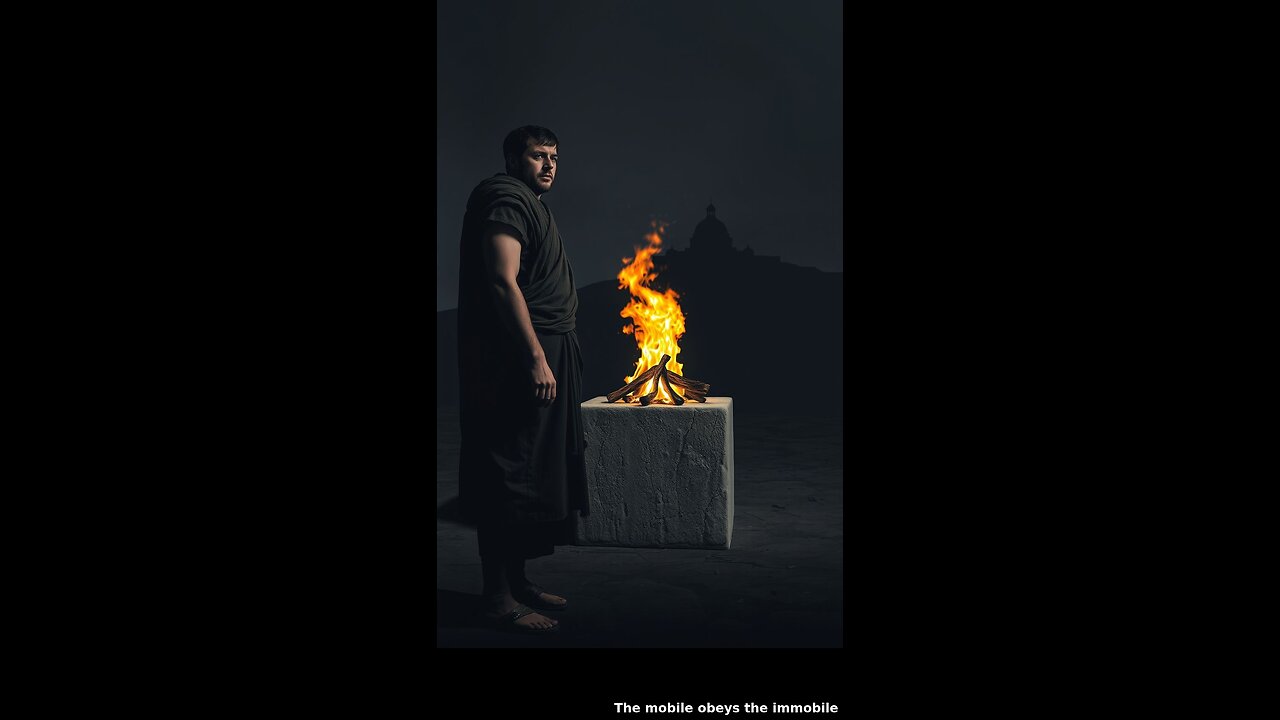Premium Only Content

Fucking water-based religions!
“Faith isn’t just a belief; it’s the fuel for your purpose. Remember, 'I can do all things through Christ who strengthens me' (Philippians 4:13).”
Me:
Fucking water-based religions!
Title: The Roman Religio: A Sacred Realism Beyond Myth and Belief
Tags: #RomanTradition #SacredRealism #Numen #PrimordialReligion #AntiMyth
The primordial Roman religio was not a system of beliefs or myths, but a sacred action, a direct engagement with the numen—the impersonal divine force that manifested in precise ritual and disciplined practice. Unlike the Greeks, who externalized the sacred into myths and idols, the Romans preserved an austere, formless approach to the transcendent.
The numen was not a god to be contemplated, but a power to be acted upon—through exact rites, through the strict observance of the mos maiorum. This was not "religion" as sentiment or philosophy, but as experientia—a conquest of the sacred through will, order, and unbroken tradition.
The Roman rejection of images, myths, and speculative theology was not a lack, but a superiority—a refusal to degrade the sacred into mere representation. Their cult was silent, severe, and potent, mirroring the Roman character itself: disciplined, unyielding, and oriented toward the primordial.
Here, the sacred was not debated—it was enacted.
Sallust described the early Romans as religiosissimi mortales ("most religious mortals"), while Cicero asserted that Rome surpassed all other nations in sacred devotion. These testimonies, among many others, refute the modern tendency to reduce Roman civilization to mere secular achievements—political, legal, or civic. Yet the term "religion" must be understood in its original Roman sense, which bears little resemblance to contemporary notions. The primordial Roman religio was rooted in the sacred foundations of the city, transcending mere belief or myth.
First Point: Early Roman religion lacked divine personification, rejecting images and mythologizing tendencies. The Roman aversion to figurative representation extended even to the profane realm, where artists were held in contempt—reflecting a higher ideal beyond aesthetic indulgence. Unlike the Greeks, the Romans did not degrade the sacred into mythological narratives or philosophical abstractions. Their realism rejected both artistic exteriorization and speculative theology.
For the Roman, the divine was not an object of thought, faith, or myth, but of action. Before the concept of deus (god), there was numen—divine power, not as personified being but as active principle. The numen was symbolized by objects (spear, fire, shield) rather than depicted as an entity. Thus, Roman religion was experimental, grounded not in faith but in direct experience. Servius notes that the maiores nostri ("our ancestors") based religion entirely on experientia—conquest, not contemplation. Similarly, Lactantius emphasizes that Roman religion sought not "truth" but ritual precision.
This reveals an active-intensive conception of the sacred, stripped of mythic embellishment. The Roman tradition preserved an essential, formless approach to the suprasensible, rejecting mediated, dramatized experiences in favor of direct, silent potency. This sacred realism mirrored Roman character: austere, disciplined, intolerant of the superfluous. Just as Roman disdain for philosophers concealed a superior ethos—evident when a Greek envoy likened the Senate to a "council of kings"—so too did their seemingly austere cult conceal a higher, primordial force. Beyond the mythic excesses of other traditions, Roman religion embodied something greater: the breath of the primordial.
1. Not Belief, but Action – Roman religio was not faith-based but ritual-based, a direct engagement with the numen (divine force) through precise, disciplined practice.
2. Rejection of Myth and Idols – Unlike the Greeks, the Romans avoided mythologizing the sacred, maintaining an austere, formless approach to the transcendent.
3. Numen Over Deus – The divine was not personified (deus) but perceived as an impersonal power (numen), requiring exact rites rather than devotional belief.
4. Silent and Severe Cult – Roman worship was marked by silence, severity, and potency—reflecting the Roman character: disciplined, unyielding, and primordial.
5. Sacred as Experiential, Not Speculative – The Romans did not theologize; they acted. Religio was experientia—conquest of the sacred through will and tradition.
6. Contempt for Aestheticization – The rejection of divine images extended to disdain for artists, as Roman sacred realism opposed mythic or artistic exteriorization.
7. Primordial Foundations – The sacred was tied to the origins of the city (Roma), not as sentimental tradition but as an unbroken, living force.
8. Anti-Philosophical Superiority – Roman indifference to philosophy masked a higher order—ritual precision as superior to abstract speculation.
9. Ritual as Power – Correct action (ius divinum) was not about "truth" but efficacy—aligning human will with cosmic order.
10. The Breath of the Primordial – Beyond degenerate mythologies, Roman religio preserved an elite, warrior-like approach to the sacred—uncompromising and direct.
Final Note: The modern "religious" mindset—watered-down, emotional, belief-based—is a decayed form. The Roman way was aristocratic: the sacred as action, not dogma.
-
 LIVE
LIVE
Pop Culture Crisis
1 hour agoJK Rowling Calls Out HARRY POTTER Director, Sydney Sweeney Dating Scooter Braun? | Ep. 909
387 watching -
 LIVE
LIVE
Futures Edge: Finance Unfiltered with Jim Iuorio and Bob Iaccino
49 minutes agoLIVE Technical Analysis with Mike Arnold
641 watching -
 3:47:18
3:47:18
Right Side Broadcasting Network
7 hours agoLIVE REPLAY: President Trump Makes an Announcement - 9/2/25
159K55 -

The Quartering
2 hours agoAlex Jones Goes To WAR With Owen Shroyer, Are All Women Terrible?, Woke Backfire Of The Year!
70.3K16 -

The White House
6 hours agoPresident Trump Makes an Announcement, Sep. 2, 2025
8.86K10 -
 2:15:05
2:15:05
MattMorseTV
2 hours ago $9.90 earned🔴Trump's Oval Office BOMBSHELL.🔴
15.3K10 -
 18:14
18:14
Real Estate
14 hours ago $0.38 earnedRising Prices PUSHING AMERICANS OVER THE EDGE
6.39K1 -
 1:43:35
1:43:35
Russell Brand
3 hours agoTrump Demands Big Pharma PROVE Covid Vaccine Is Safe – Did Pfizer LIE?! - SF626
131K25 -
 LIVE
LIVE
Due Dissidence
4 hours agoIsrael THREATENS Greta, InfoWars Host QUITS, FL Losing $200M on EMPTYING Alligator Alcatraz
951 watching -
 6:09:56
6:09:56
Law&Crime
7 hours ago $0.84 earnedLIVE: Adelson Matriarch Murder Trial — FL v. Donna Adelson — Day 6
12.8K